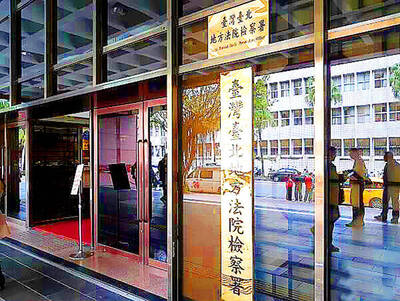A US congressional committee was told on Wednesday that Taiwan needed more advanced fighter aircraft and diesel submarines to defend itself against a possible attack by China.
Testifying before the US House of Representatives Committee on Foreign Affairs, Larry Wortzel, a specialist on the Chinese and Taiwanese military, said that despite a notable improvement in relations across the Taiwan Strait, Beijing continues to insist on its right to use force should Taiwan move toward independence.
“The cross-strait military balance increasingly favors China. Beijing has deployed over 1,100 short-range ballistic missiles opposite the island. In my view, Taiwan’s most pressing need is for new or modernized fighter aircraft,” Wortzel said.
Wortzel was speaking at a committee briefing on “China’s behavior and its impact on US interests” held on the first day of Chinese President Hu Jintao’s (胡錦濤) state visit to Washington.
Republican Representative David Rivera described Taiwan as “a bastion of democracy surrounded by a fortress of tyranny.”
NEW OR EXISTING
Wortzel said the big question was whether to sell Taipei F-16C/D aircraft, which have a long range and could be used for deep strikes inside China “if their [Taiwan’s] military chose to do that” or modernize the existing F-16A/B aircraft that Taiwan already possesses.
He said that he had talked with aviation engineers who thought that with the addition of brand new avionics, radar and targeting equipment, the A/Bs could be converted into “very capable aircraft.”
“They need the aircraft and I think they have to have that need addressed,” Wortzel said.
Representative Gerry Connolly, a Democrat, asked if there was any reason to believe that Taiwan was not capable of defending itself in case of an invasion.
“I don’t think that is the issue,” Wortzel said. “The issue is how capable would they be in doing it. They would have a hard time defending against 1,100 ballistic missiles. The missiles would do a lot of damage. They would be hard pressed if there were massive special operations insertions into Taiwan to disrupt the infrastructure.”
He said Taiwan could do more to strengthen airfields and storage facilities.
“If there is one thing they could do to immediately improve their capabilities, it would be to link all of their ground, naval, air assets and missiles so they could take part in cooperative target engagements,” Wortzel said. “They are developing their own multiple launch rocket systems and could probably use assistance with precision guided rounds.”
SUBMARINES
Asked about submarines, Wortzel said: “It’s a very difficult problem ... It’s a problem for the US Navy because we really don’t want to work on, or produce, diesel submarines, but they need these submarines.”
“The United States could get Costa Rica to buy a dozen submarines from Germany and then transfer them and it wouldn’t hurt anybody — if the Germans would look the other way on the re-transfer,” he said.

Intelligence agents have recorded 510,000 instances of “controversial information” being spread online by the Chinese Communist Party (CCP) so far this year, the National Security Bureau (NSB) said in a report yesterday, as it warned of artificial intelligence (AI) being employed to generate destabilizing misinformation. The bureau submitted a written report to the Legislative Yuan in preparation for National Security Bureau Director-General Tsai Ming-yen’s (蔡明彥) appearance before the Foreign Affairs and National Defense Committee today. The CCP has been using cognitive warfare to divide Taiwanese society by commenting on controversial issues such as Taiwan Semiconductor Manufacturing Co’s (TSMC, 台積電) investments in the

INVESTIGATION: The case is the latest instance of a DPP figure being implicated in an espionage network accused of allegedly leaking information to Chinese intelligence Democratic Progressive Party (DPP) member Ho Jen-chieh (何仁傑) was detained and held incommunicado yesterday on suspicion of spying for China during his tenure as assistant to then-minister of foreign affairs Joseph Wu (吳釗燮). The Taipei District Prosecutors’ Office said Ho was implicated during its investigation into alleged spying activities by former Presidential Office consultant Wu Shang-yu (吳尚雨). Prosecutors said there is reason to believe Ho breached the National Security Act (國家安全法) by leaking classified Ministry of Foreign Affairs information to Chinese intelligence. Following interrogation, prosecutors petitioned the Taipei District Court to detain Ho, citing concerns over potential collusion or tampering of evidence. The

‘COMPREHENSIVE PLAN’: Lin Chia-lung said that the government was ready to talk about a variety of issues, including investment in and purchases from the US The National Stabilization Fund (NSF) yesterday announced that it would step in to staunch stock market losses for the ninth time in the nation’s history. An NSF board meeting, originally scheduled for Monday next week, was moved to yesterday after stocks plummeted in the wake of US President Donald Trump’s announcement of 32 percent tariffs on Taiwan on Wednesday last week. Board members voted to support the stock market with the NT$500 billion (US$15.15 billion) fund, with injections of funds to begin as soon as today. The NSF in 2000 injected NT$120 billion to stabilize stocks, the most ever. The lowest amount it

NEGOTIATIONS: Taiwan has good relations with Washington and the outlook for the negotiations looks promising, Minister of Economic Affairs J.W. Kuo said Taiwan’s GDP growth this year is expected to decrease by 0.43 to 1.61 percentage points due to the effects of US tariffs, National Development Council (NDC) Minister Paul Liu (劉鏡清) said at a meeting of the legislature’s Economics Committee in Taipei yesterday, citing a preliminary estimate by a private research institution. Taiwan’s economy would be significantly affected by the 32 percent “reciprocal” tariffs slapped by the US, which took effect yesterday, Liu said, adding that GDP growth could fall below 3 percent and potentially even dip below 2 percent to 1.53 percent this year. The council has commissioned another institution